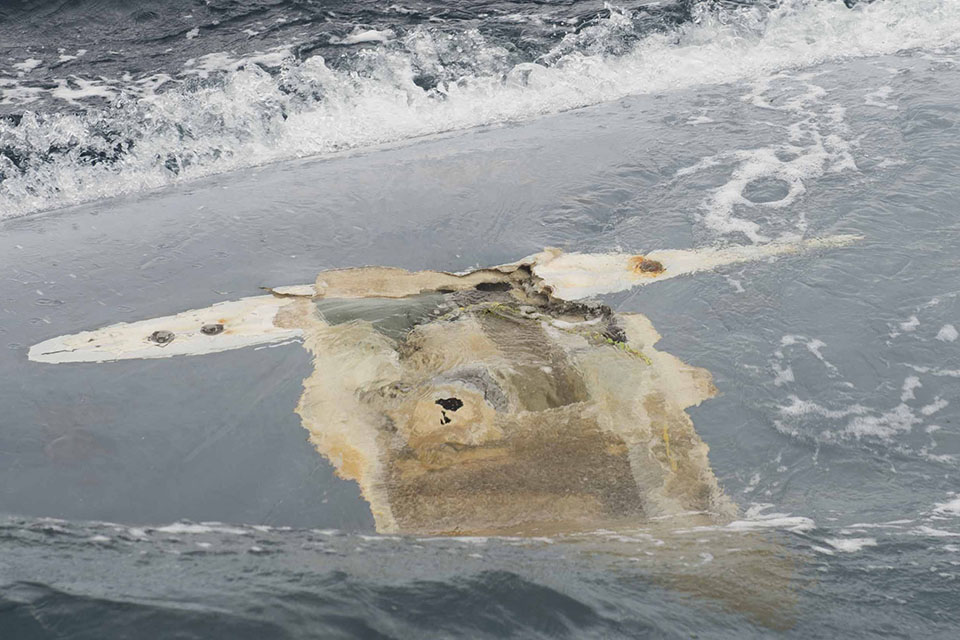Keel detachment and capsize of sailing yacht Cheeki Rafiki with loss of 4 lives
Location: Approximately 720 miles east-south-east of Nova Scotia, Canada.
Accident Investigation Report 8/2015
Investigation report into marine accident including what happened, safety lessons and recommendations made:

Photograph courtesy of United States Coast Guard
Summary
On 16 May 2014 the UK registered yacht Cheeki Rafiki and its crew were lost. Despite an extensive search that found the upturned hull of the yacht, the four crew remain missing. The hull was not recovered and is assumed to have sunk. In the absence of survivors and material evidence, the causes of the accident remain a matter of some speculation. However, it is concluded that the yacht capsized and inverted following a detachment of its keel.
Safety lessons
- where bonding is used to secure a matrix of stiffeners into a hull, it is possible for that bond to break down leading to weakening of the overall structure. Importantly, break down of the bond can be difficult to detect
- a ‘light’ grounding can still cause significant undetected damage to the matrix bonding
- regular inspection of the hull and internal structure should help to provide early warning of possible keel detachment
- ocean passage contingency planning and careful routing can significantly reduce the risks of weather-related damage occurring
- when flooding is detected, all possible sources of water ingress should be checked, including the area the keel is attached to the hull
- an ability to send an alert and to abandon to a liferaft is essential in the event of capsize and inversion
Recommendations
A recommendation (2015/117) has been made to the British Marine Federation to co-operate with certifying authorities, manufacturers and repairers with the aim of developing best practice industry-wide guidance on the inspection and repair of yachts where a glass reinforced plastic matrix and hull have been bonded together.
A recommendation has also been made to the Maritime and Coastguard Agency (2015/119) to provide more explicit guidance about circumstances under which commercial certification for small vessels is required, and when it is not.
Further recommendations (2015/121, 2015/122 and 2015/123) have been made to sport governing bodies with regard to issuing operational guidance to both the commercial and pleasure sectors of the yachting community aimed at raising awareness of the potential damage caused by any grounding, and the factors to be taken into consideration when planning ocean passages.